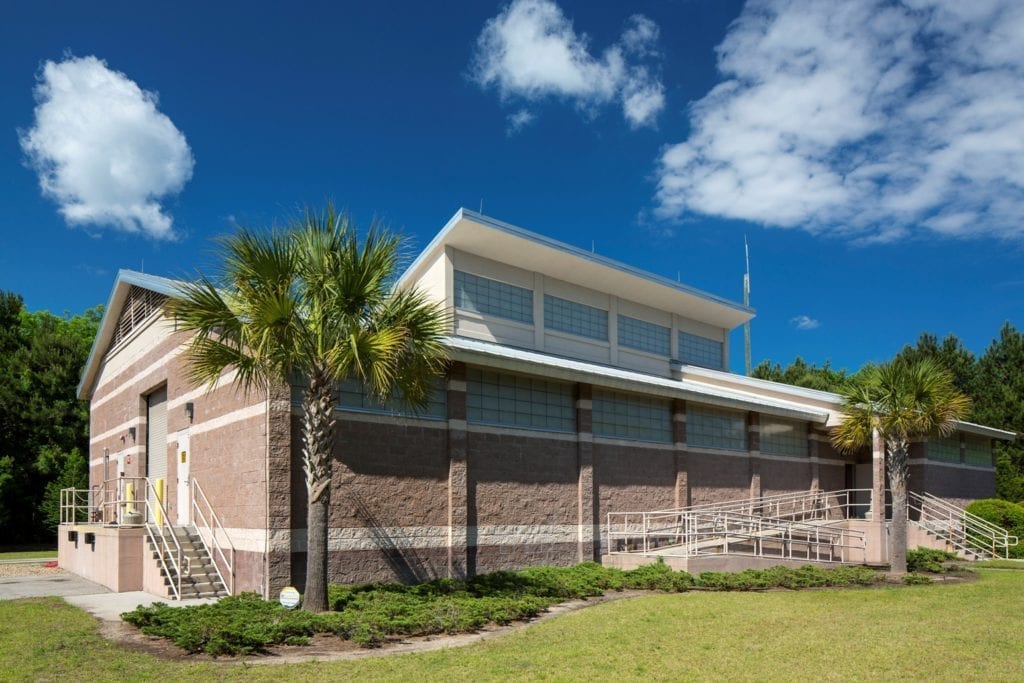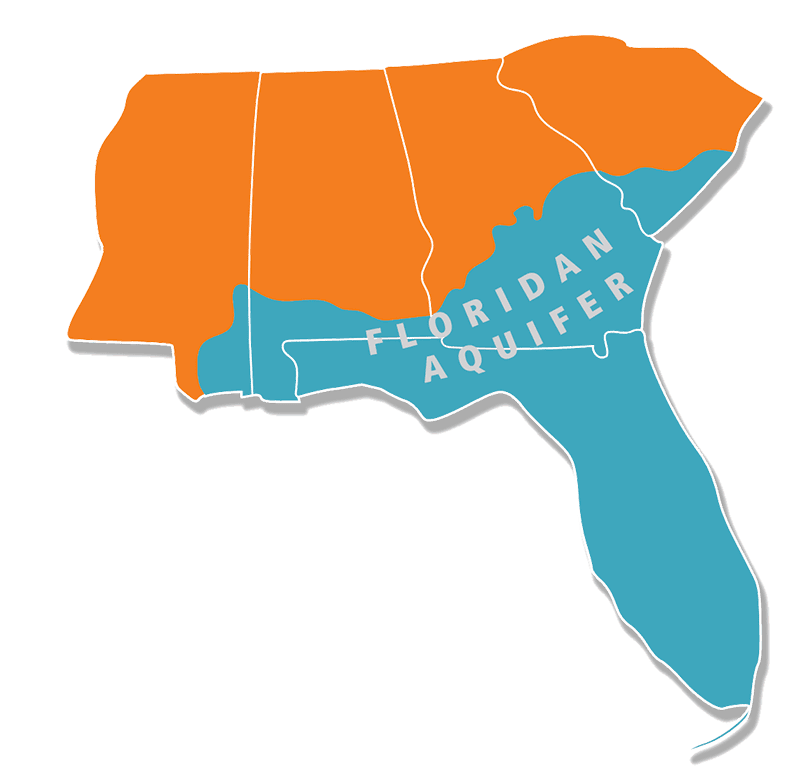Reverse osmosis is a process that removes salts and other dissolved solids from water. Many brand-name bottled waters are produced through this method. The PSD’s Reverse Osmosis Drinking Water Treatment Facility on Jenkins Island (across U.S. 278 from Windmill Harbour) provides more than 60 percent of our water supply. The plant, which opened in 2009, produces more than 4 million gallons of fresh drinking water a day. The plant is fed by three raw water wells drilled into the 600-foot-deep Middle Floridan Aquifer. The wells are pumped at a rate of approximately 1,500 gallons per minute and the plant operates around the clock. Research and monitoring has shown that the Middle Floridan Aquifer is a very abundant and long-term source of water for the island’s future.
The PSD’s RO Plant, located across U.S. 278 from Windmill Harbour, began operations in April 2009. It provides customers with 3 million gallons of fresh water a day, about half of the average daily demand for water. In 2013, the PSD began preparations to expand the plant’s production to 4 million gallons a day. The RO Plant’s construction was necessary to replace water supply lost to saltwater intrusion. The plant uses state-of-the-art filtration to produce a very high-quality water. In fact, it’s the same process used to produce many brand-name bottled waters and other beverages. The RO plant is expandable to provide 6 million gallons of water a day. The PSD has the capability to expand the plant in 1-MGD (million gallons per day) increments, thereby allowing the plant’s capacity to increase as it is needed to replace water supply lost as a result of saltwater intrusion.


The Upper Floridan Aquifer is a limestone, freshwater aquifer located 50 to 150 feet underground. It is one of the largest aquifers in the world, and stretches from the Beaufort area southward through the Florida Everglades. Groundwater from this aquifer requires little treatment. The PSD treats this water with chloramines directly at our well sites. Unfortunately, this aquifer has been impacted by saltwater intrusion.
The Upper Floridan Aquifer is a limestone, freshwater aquifer located 50 to 150 feet underground. It is one of the largest aquifers in the world, and stretches from the Beaufort area southward through the Florida Everglades. Groundwater from this aquifer requires little treatment. The PSD treats this water with chloramines directly at our well sites. Unfortunately, this aquifer has been impacted by saltwater intrusion.

The PSD constructed the island’s first-ever Aquifer Storage & Recovery Well inside Hilton Head Plantation in 2011. The well both stores and withdraws drinking water. The PSD takes advantage when BJWSA has reduced wholesale water rates, storing treated Savannah River surface water in the Middle Floridan Aquifer using the ASR Well.
Then, in the summer months when drinking water demand and the wholesale water rates increase, the ASR Well is used to withdraw and re-treat 2 million gallons of drinking water per day. The ASR process involves injecting treated water into the underground aquifer, and then withdrawing and retreating it for distribution.
The ASR process involved the PSD injecting 240 million gallons of wholesale water into the 600-foot-deep Middle Floridan Aquifer to build a bubble of fresh water in the brackish aquifer. The fresh water displaces the brackish water and a buffer zone is created at the edges of the fresh water bubble. When the ASR well is used to withdraw water, the water is drawn from the center of the fresh water bubble.
